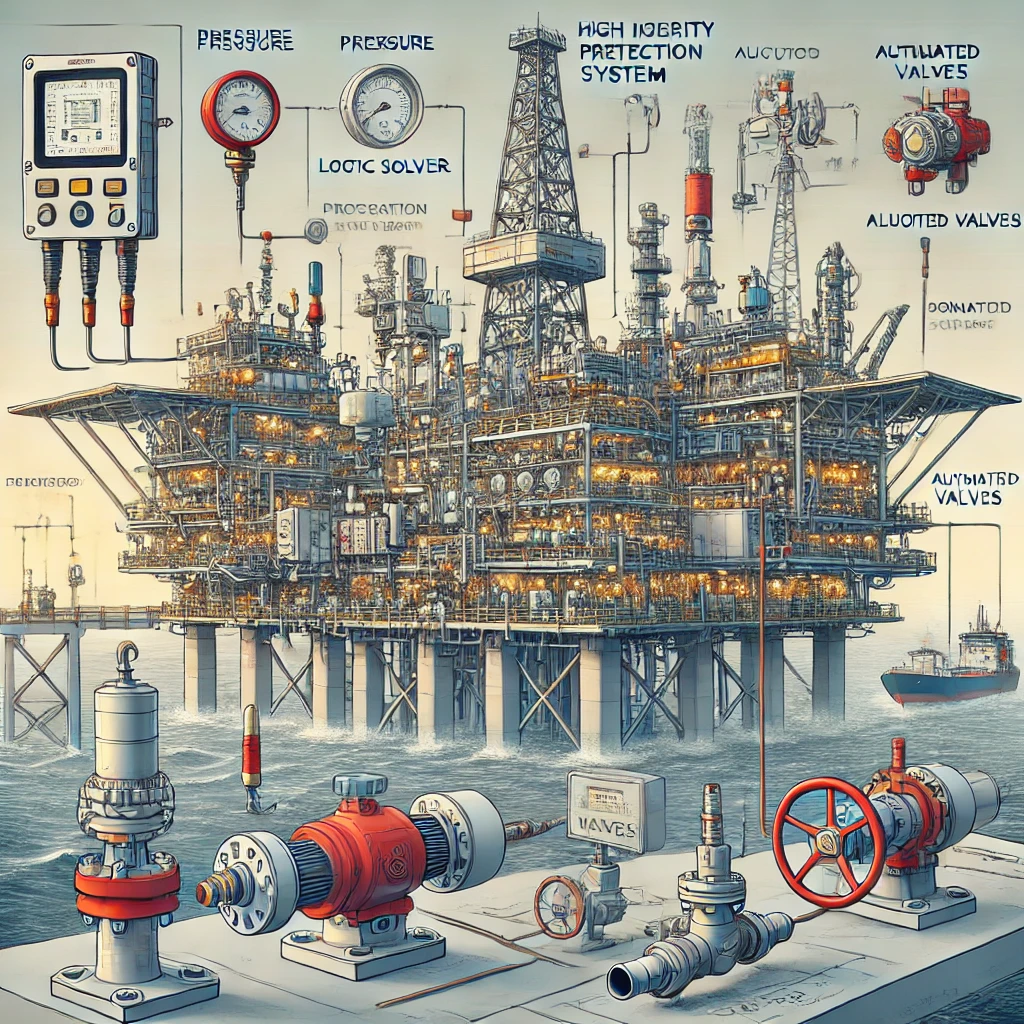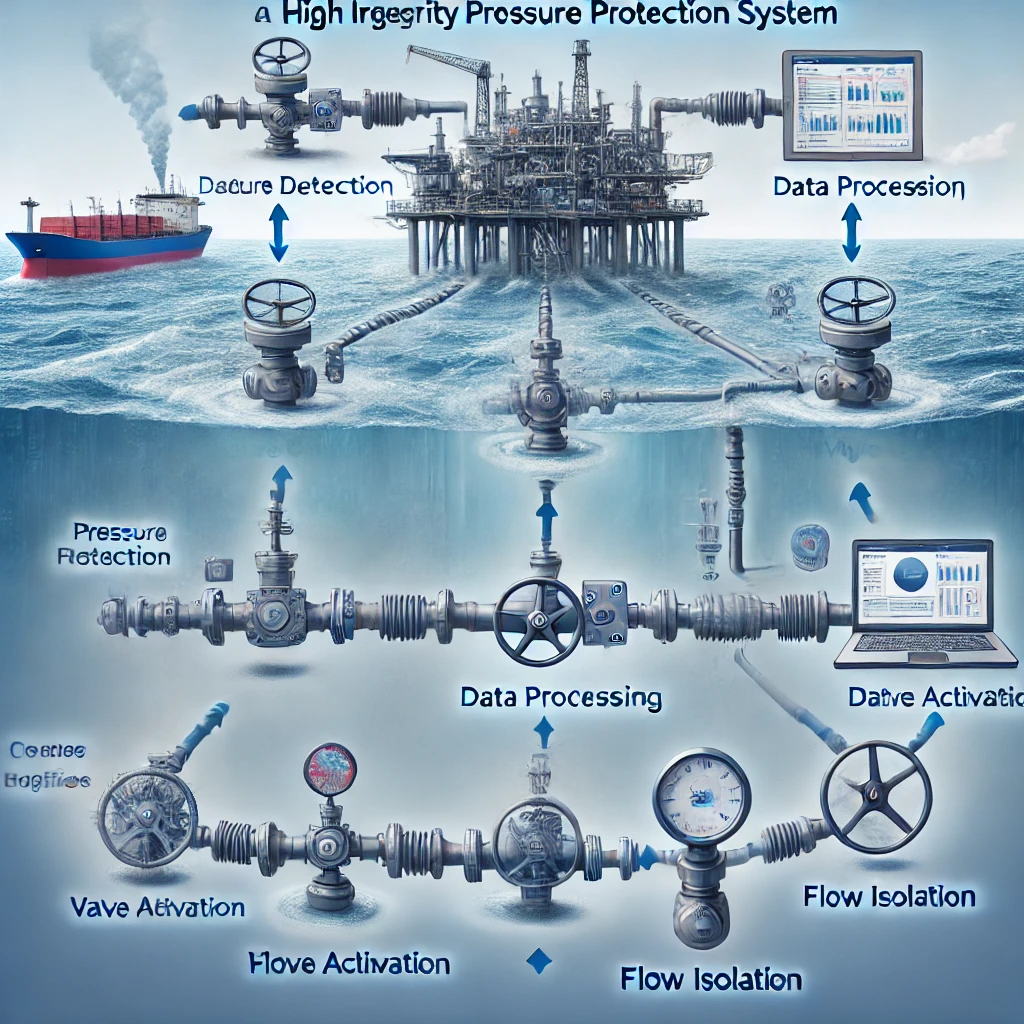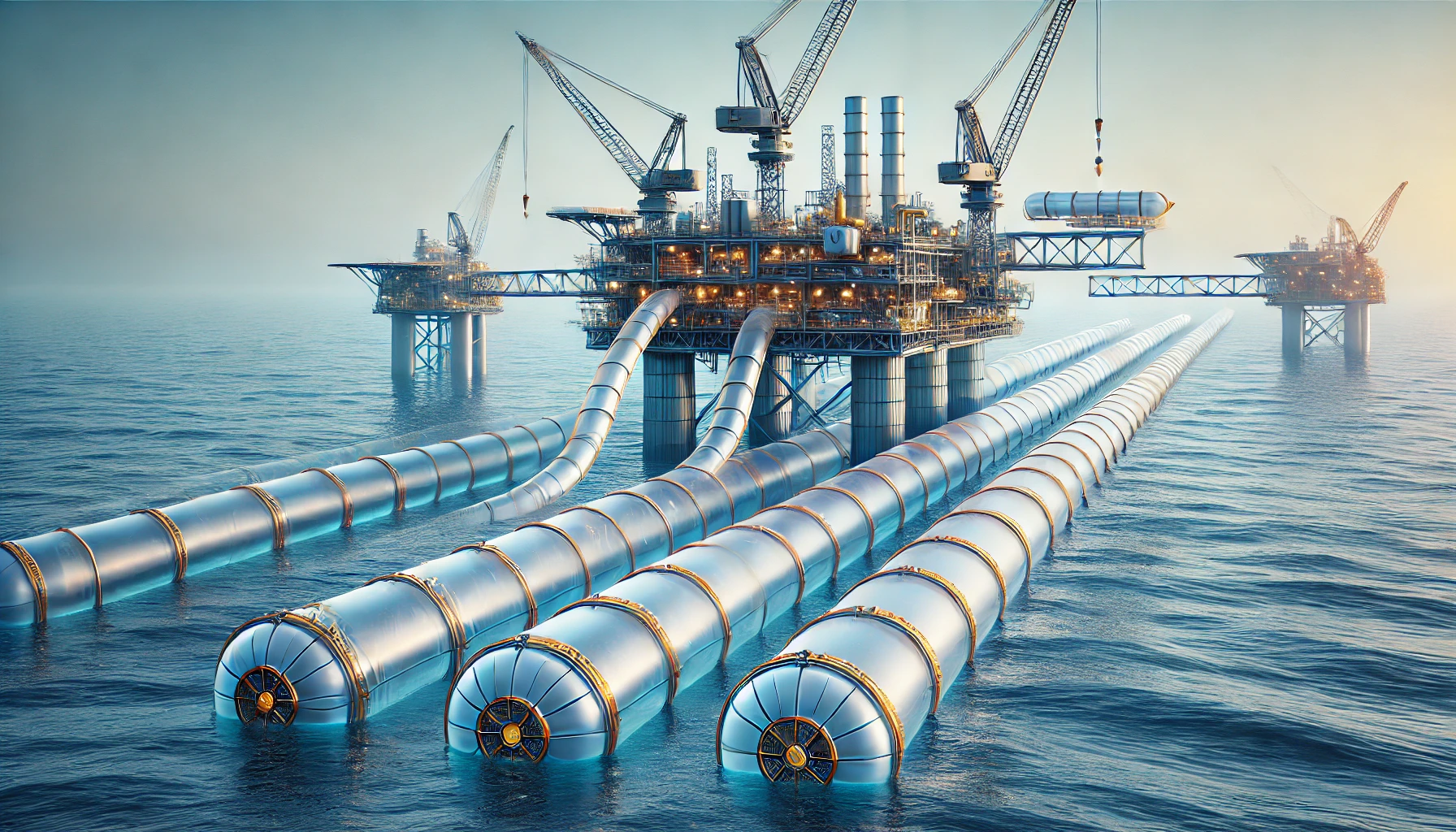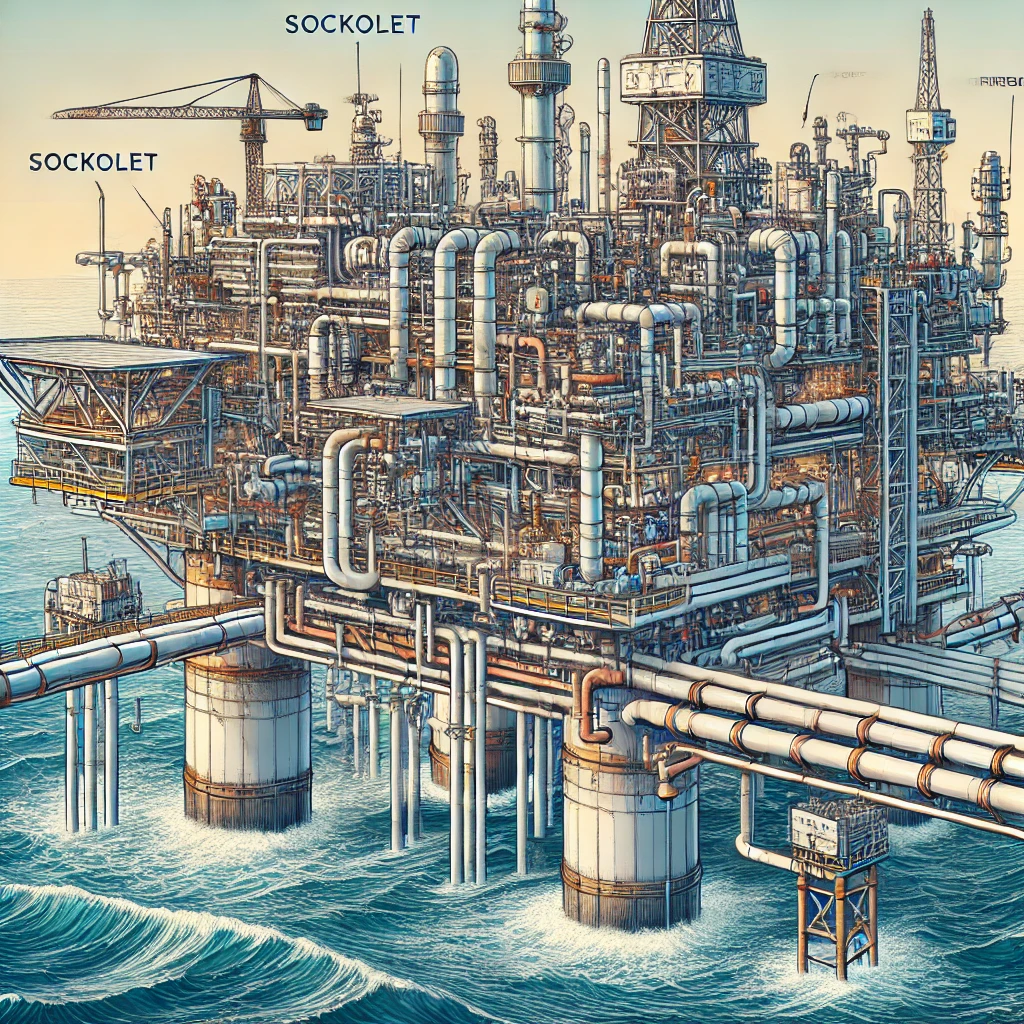In the realm of ocean engineering, safety and reliability are paramount. The industry operates under extreme conditions where the stakes are incredibly high. One critical aspect that ensures the safe operation of offshore facilities is the High Integrity Pressure Protection System (HIPPS). HIPPS are advanced safety systems designed to protect pipelines, equipment, and personnel from the dangers of over-pressurization. This blog delves into the significance of HIPPS in ocean engineering, highlighting their role, components, functionality, and the benefits they bring to the industry.
Understanding HIPPS
High Integrity Pressure Protection Systems (HIPPS) are sophisticated safety mechanisms designed to prevent over-pressurization in industrial processes, particularly in the oil and gas industry. In ocean engineering, where offshore platforms and subsea installations operate under high pressures, HIPPS play a crucial role in maintaining safety and operational integrity. Unlike traditional pressure relief systems that release excess pressure into the environment, HIPPS work by isolating the source of the pressure build-up, thereby preventing potential hazards.
Components of HIPPS
A typical HIPPS comprises several key components that work together to detect, isolate, and mitigate pressure surges:
- Pressure Sensors: These devices continuously monitor the pressure levels within the system. In the context of ocean engineering, these sensors are designed to withstand harsh marine environments, ensuring accurate and reliable readings.
- Logic Solvers: The brain of the HIPPS, logic solvers, process the data received from the pressure sensors. They determine whether the pressure has exceeded safe limits and trigger the appropriate response.
- Actuated Valves: When the logic solver detects a pressure surge, it sends a signal to the actuated valves. These valves promptly shut off the flow, isolating the high-pressure source and preventing over-pressurization.
- Communication Systems: In ocean engineering, reliable communication systems are essential for HIPPS. These systems ensure seamless data transfer between the components, enabling real-time response to pressure anomalies.
The Role of HIPPS in Ocean Engineering

The application of HIPPS in ocean engineering is multifaceted, addressing various safety and operational challenges:
- Protecting Subsea Pipelines: Subsea pipelines are vulnerable to pressure fluctuations, which can lead to catastrophic failures. HIPPS safeguard these pipelines by isolating sections experiencing abnormal pressure, thereby preventing leaks and ruptures.
- Enhancing Platform Safety: Offshore platforms host complex processes involving high-pressure fluids. HIPPS provide an additional layer of safety, ensuring that pressure levels remain within safe limits and mitigating the risk of accidents.
- Environmental Protection: Traditional pressure relief systems release excess pressure into the environment, potentially causing pollution. HIPPS, by isolating the pressure source, minimize environmental impact, aligning with stringent environmental regulations.
- Economic Benefits: By preventing equipment damage and operational downtime, HIPPS contribute to significant cost savings. The reliability of HIPPS ensures uninterrupted production, optimizing overall efficiency.
Functionality and Operation
HIPPS operate on a simple yet effective principle: isolating the source of over-pressure before it can cause harm. The functionality of HIPPS can be summarized in the following steps:
- Pressure Detection: Pressure sensors continuously monitor the system. In ocean engineering, these sensors are strategically placed at critical points to ensure comprehensive coverage.
- Data Processing: The logic solver processes the data from the sensors, comparing it against predefined safe pressure limits.
- Activation of Valves: If the pressure exceeds the set limits, the logic solver sends a signal to the actuated valves.
- Flow Isolation: The actuated valves promptly shut, isolating the high-pressure source. This rapid response prevents over-pressurization and potential equipment failure.
- System Reset: Once the pressure returns to safe levels, the HIPPS can be manually or automatically reset, ready for future operation.
Advancements in HIPPS Technology

The field of ocean engineering continually evolves, and so does the technology behind HIPPS. Recent advancements have enhanced the efficiency and reliability of these systems:
- Digital Integration: Modern HIPPS are integrated with digital monitoring and control systems, enabling remote operation and real-time data analysis.
- Improved Materials: The components of HIPPS, especially sensors and valves, are now made from advanced materials resistant to corrosion and extreme temperatures, ensuring durability in marine environments.
- Redundancy and Reliability: Enhanced redundancy features ensure that multiple sensors and logic solvers back up each other, minimizing the risk of failure.
Case Studies and Applications
Several case studies highlight the effectiveness of High Integrity Pressure Protection Systems (HIPPS) in ocean engineering, demonstrating their critical role in enhancing safety and operational efficiency.
North Sea Offshore Platform
One notable example is an offshore platform in the North Sea, an area known for its harsh and volatile weather conditions. The platform regularly experienced pressure surges that posed significant risks to both personnel and equipment. Traditional pressure relief systems were inadequate in managing these surges, leading to frequent operational disruptions and high maintenance costs.
Implementation of HIPPS:
- Assessment and Design: Engineers conducted a thorough assessment of the platform’s pressure management needs. They designed a HIPPS tailored to the specific conditions of the North Sea, incorporating high-performance pressure sensors and advanced logic solvers.
- Installation and Integration: The HIPPS was seamlessly integrated into the existing infrastructure, with minimal downtime. The system included multiple pressure sensors placed at critical points to ensure comprehensive monitoring.
- Operational Impact: Once operational, the HIPPS provided real-time monitoring and rapid response to pressure surges. The system’s ability to isolate high-pressure sources before they could cause damage significantly reduced incidents of over-pressurization.
Benefits:
- Enhanced Safety: The installation of HIPPS greatly improved the safety of the platform. The system’s rapid response to pressure anomalies ensured that pressure levels remained within safe limits, protecting both personnel and equipment.
- Cost Reduction: By preventing over-pressurization and subsequent equipment damage, the HIPPS helped reduce maintenance costs. The platform also experienced fewer operational disruptions, leading to improved productivity.
- Environmental Protection: The HIPPS minimized the risk of environmental contamination by preventing pressure-induced leaks and ruptures.
Subsea Pipeline Project

Another significant case involves a major subsea pipeline project. Subsea pipelines are critical for transporting oil and gas from offshore fields to onshore facilities. However, maintaining pressure integrity in these pipelines is a complex challenge due to the high-pressure environment and the potential for severe environmental impacts in case of failure.
Challenges:
- Pressure Variability: The subsea pipeline was subject to pressure fluctuations caused by varying flow rates and external environmental factors.
- Risk of Rupture: Traditional pressure management systems were insufficient to handle sudden pressure spikes, posing a risk of pipeline rupture and subsequent oil spills.
Implementation of HIPPS:
- Customized Design: Engineers developed a HIPPS specifically designed for subsea conditions. The system included robust pressure sensors capable of withstanding the harsh underwater environment and advanced logic solvers for accurate pressure analysis.
- Comprehensive Monitoring: The HIPPS was installed along the pipeline at strategic locations to ensure continuous monitoring of pressure levels. The system was designed to provide real-time data to the control center, enabling immediate action in case of anomalies.
- Rapid Response Mechanism: Upon detecting a pressure surge, the HIPPS’s logic solvers would activate the actuated valves, isolating the affected section of the pipeline to prevent over-pressurization.
Benefits:
- Continuous Monitoring: The HIPPS ensured continuous pressure monitoring, providing real-time data and enhancing the ability to respond to pressure fluctuations swiftly.
- Environmental Safety: By preventing pressure-induced ruptures, the HIPPS significantly reduced the risk of environmental disasters, such as oil spills. This protection aligned with stringent environmental regulations and corporate sustainability goals.
- Operational Reliability: The reliable performance of the HIPPS minimized the risk of pipeline downtime, ensuring a steady flow of oil and gas. This reliability was crucial for maintaining the economic viability of the pipeline project.
Gulf of Mexico Deepwater Operations
In the Gulf of Mexico, deepwater drilling operations face unique challenges due to the extreme depths and high-pressure conditions. A major drilling operation in this region implemented HIPPS to enhance safety and operational efficiency.
Challenges:
- Extreme Pressure: The deepwater environment presented extreme pressure conditions that traditional safety systems could not adequately manage.
- Complex Operations: The drilling operation involved complex processes with high-pressure fluids, increasing the risk of over-pressurization.
Implementation of HIPPS:
- Advanced Pressure Sensors: The HIPPS incorporated advanced pressure sensors designed to function accurately under extreme deepwater conditions.
- Integrated Control Systems: The system was integrated with the operation’s existing control systems, enabling seamless data exchange and coordination.
- Redundant Safety Mechanisms: To ensure maximum reliability, the HIPPS included redundant sensors and logic solvers, providing multiple layers of safety.
Benefits:
- Operational Safety: The HIPPS significantly improved the safety of deepwater drilling operations by providing a robust mechanism for managing high-pressure conditions.
- Economic Efficiency: By preventing equipment damage and reducing operational downtime, the HIPPS contributed to substantial cost savings.
- Regulatory Compliance: The system helped the operation meet stringent safety and environmental regulations, enhancing the project’s overall sustainability.

These case studies illustrate the vital role of High Integrity Pressure Protection Systems (HIPPS) in ocean engineering. Whether safeguarding offshore platforms, subsea pipelines, or deepwater drilling operations, HIPPS provide an essential layer of protection that ensures safety, enhances reliability, and minimizes environmental impact. The integration of advanced technologies and customized designs has made HIPPS an indispensable component of modern ocean engineering, addressing the industry’s unique challenges and contributing to its sustainable development.











